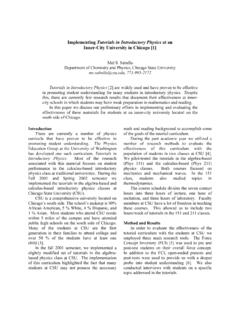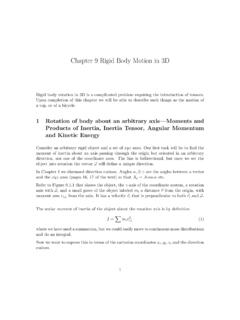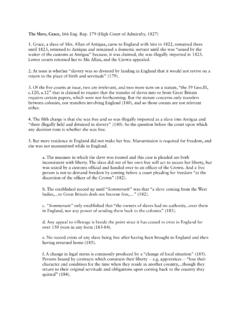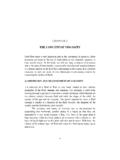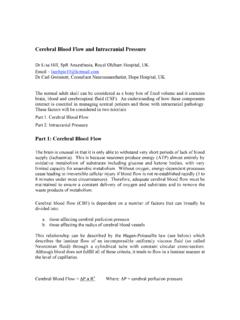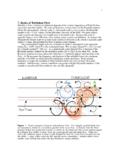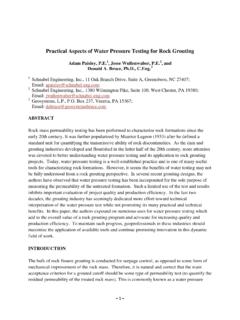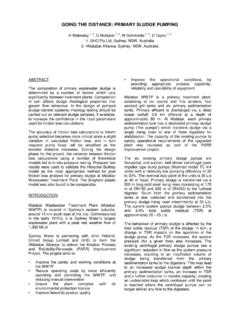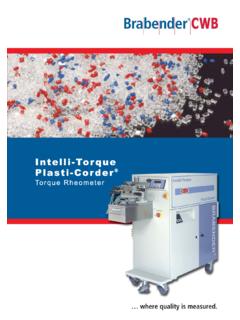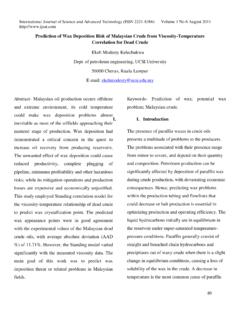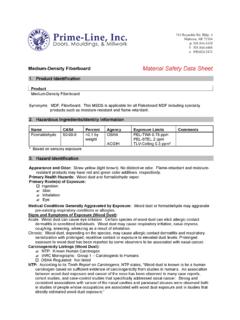Transcription of 33 Gradient Appendix - RIT - People
1 142 Appendix VIII Ultracentrifugation Ultracentrifugation, the characterization of macromolecules by centrifugation at super high speeds, is a foundational technique that has greatly enhanced our understanding of molecular biology. The rate of settling or sedimentation of macromolecules under high centrifugal force is a function of their size and shape. A macromolecule studied in this manner is usually characterized according to its S value (sedimentation coefficient), named after Theodor Svedberg, a Swedish chemist who received the Nobel Prize for his work on colloids and his invention of the ultracentrifuge. The relationship between rate of sedimentation and centrifugal force is: S = velocity/centrifugal force where centrifugal force is r x 2 r = radial distance from the axis of rotation and = angular velocity in radians per second. Units of S are given as seconds, and 1S = 10-13 sec. Thus a molecule with an S value of 30S will travel 30 micrometers per second (30 x 106 m/s) under a centrifugal force of one million gravities.
2 The most familiar use of S values is in the characterization of ribosomes. In prokaryotes, there are two ribosomal subunits, 30S and 50S, based on how their size and conformation affects their behavior under centrifugation. Together, these subunits comprise an intact 70S particle. Note that S units are not additive. They represent rates of sedimentation, not actual size. There are two basic ultracentrifugation methods: equilibrium sedimentation and zonal sedimentation. Both involve sedimentation through density gradients. Equilibrium Sedimentation CsCl gradients separate DNA according to buoyant density. The Gradient is self-forming and molecules float to their isopycnic point. Macromolecules such as DNA are dissolved in a uniform solution of CsCl. High centrifugal force the causes the CsCl to sediment and form a pellet. However, diffusion forces the concentration to be equalized. After 44 hours of centrifugation, these opposing forces cause the CsCl to form a Gradient of densities and molecules within the Gradient will find their isopycnic points, the point at which the density of the macromolecule equals the density of the CsCl.
3 CsCl gradients separate according to density (unit mass/unit volume). Molecules with the same density have the same isopycnic point regardless of size. Factors that affect density of DNA are conformation, strandedness, and AT/GC ratio. Ultracentrifugation 143 The AT/GC ratio can be calculated according to the formula: = + x (%GC) %GC = = density in g/ml is the density of DNA containing 100% AT The degree of separation of bands is a function of the shape of the Gradient . The diagram below shows two gradients with different shapes. Gradient 1 is shallow and Gradient 2 is steep. The line indicates the distribution of densities in the Gradient . The isopycnic points of plasmid and chromosome are the same in both gradients but the position of the band depends on where the isopycnic point of each DNA intercepts the Gradient curve. The different shapes are the result of small differences in recovering lysate and weighing CsCl between the various student pairs.
4 Appendix VII 144 Zonal Sedimentation Zonal gradients separate DNA according to size. Gradients, typically sucrose, are preformed by setting up a mixing chamber that has high and low concentration sucrose solutions in each of two chambers. The solution in one chamber is slowly pumped into a centrifuge tube with a peristaltic pump. As the chamber is depleted, it is replenished by and diluted with sucrose from the second chamber. The result is a viscosity Gradient . A DNA sample is floated on top of the Gradient and the sample is spun in the ultracentrifuge. Because the Gradient is preformed, the run time is short. Large fragments penetrate farther into the viscosity Gradient than small fragments, the opposite of a gel. Collection of Gradients Gradients can be collected analytically or preparatively. In an analytical Gradient , the bottom of the tube is pierced and the Gradient collected by recovering drops of liquid in a series of tubes. The fractions can then be analyzed for refractive index, UV absorption of DNA, radioactivity, size in a gel, etc.
5 In a preparative Gradient the tube is pierced on the side with a syringe and the desired band is withdrawn. The remainder of the Gradient is discarded.


